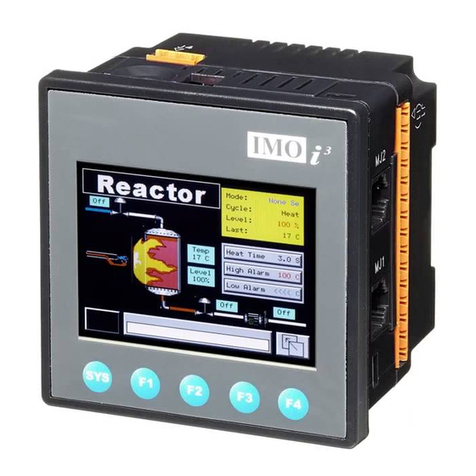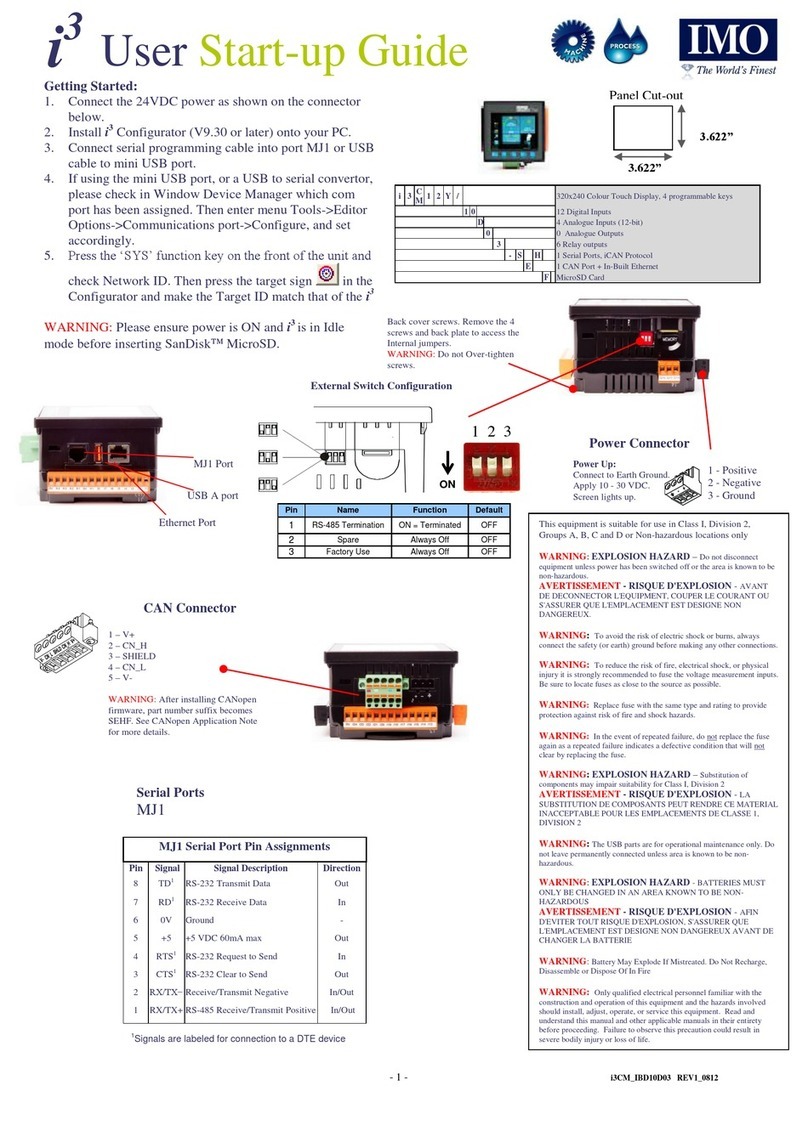
5
8.3 Battery Life................................................................................................................................49
8.4 Lithium Battery Safety ..............................................................................................................49
8.6 Battery Charging Status ............................................................................................................50
8.7 Battery Charging State..............................................................................................................50
8.8 Battery Status in System Registers ...........................................................................................50
9.1 Overview...................................................................................................................................51
9.2 MJ1 Serial Port Pinout ..............................................................................................................51
9.3 i3 configurator Programming via Serial Port ............................................................................ 53
9.4 Ladder-Controlled Serial Communication ................................................................................ 53
CHAPTER 10: CAN COMMUNICATIONS ...............................................................................................54
10.1 Overview ...............................................................................................................................54
10.2 Port Description .................................................................................................................... 54
10.3 CAN Port Wiring ....................................................................................................................55
10.4 i3 configurator Programming via CAN .................................................................................. 57
10.5 Ladder-Controlled CAN Communication...............................................................................57
10.6 Using CAN for I/O Expansion (Network I/O) .........................................................................57
CHAPTER 11: ETHERNET COMMUNICATION .......................................................................................58
11.1 Ethernet Overview ................................................................................................................58
11.2 MAC Address .........................................................................................................................58
11.3 Ethernet Module Protocols and Features............................................................................. 59
11.4 Ethernet System Requirements ............................................................................................59
11.5 Ethernet Module Specifications............................................................................................59
11.6 Ethernet Module Configuration ............................................................................................ 60
11.7 Ethernet Configuration – IP Parameters...............................................................................63
11.8 Ethernet Module Protocol Configuration .............................................................................63
CHAPTER 12: DOWNLOADABLE COMMUNICATION PROTOCOLS .......................................................64
12.1 Overview ...............................................................................................................................64
12.2 Protocol Config...................................................................................................................... 66
11.3 Network Configuration.......................................................................................................... 67
12.4 Device List and Device Configuration.................................................................................... 69
12.5 Scan List.................................................................................................................................71
12.6 Data Mapping Configuration (Scan List Entry) ......................................................................72
CHAPTER 13: REMOVABLE MEDIA....................................................................................................... 74
13.1 Overview ...............................................................................................................................74
13.2 microSD Cards .......................................................................................................................74
13.3 microSD File System ..............................................................................................................74
13.4 Using Removable Media to Log Data .................................................................................... 75
13.5 Using Removable Media to Load and Save Applications ......................................................75
13.6 Removable Media (RM) Function Blocks in I3 configurator ................................................. 75
13.7 Filenames used with the Removable Media (RM) Function Blocks...................................... 76
13.8 System Registers used with RM ............................................................................................77
CHAPTER 14: FAIL-SAFE SYSTEM..........................................................................................................78
14.1 Overview ...............................................................................................................................78
14.2 Settings..................................................................................................................................78
14.3 Backup / Restore Data...........................................................................................................79
14.4 Autoload................................................................................................................................ 81
14.5 Autorun ................................................................................................................................. 82
CHAPTER 15: MAINTENANCE...............................................................................................................83






























